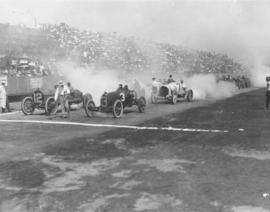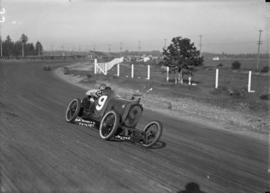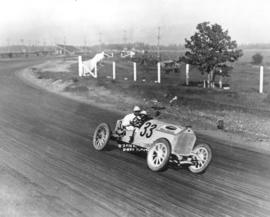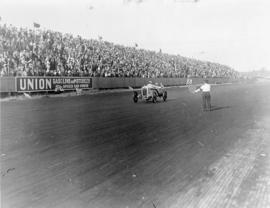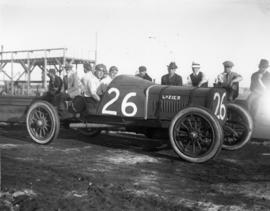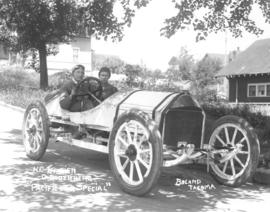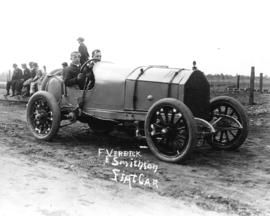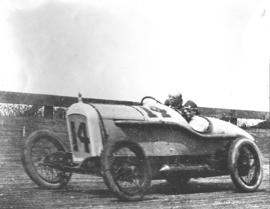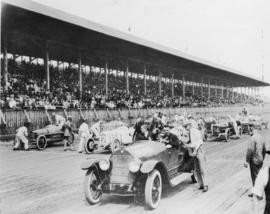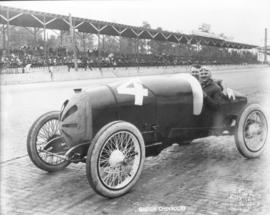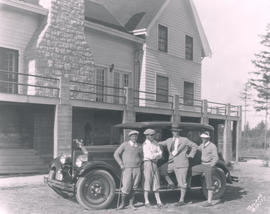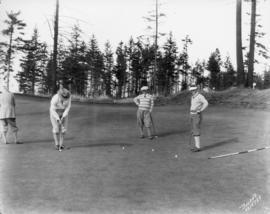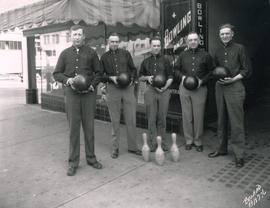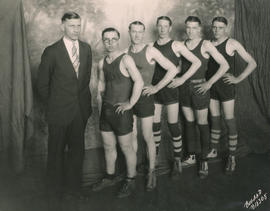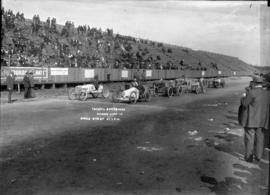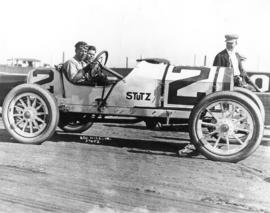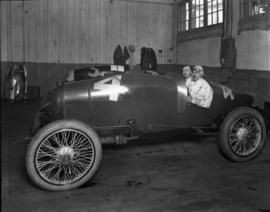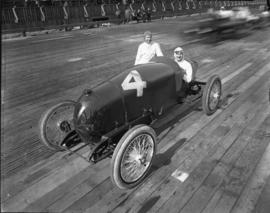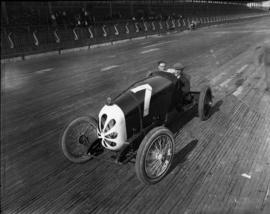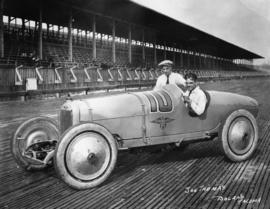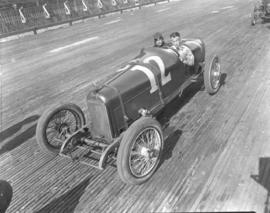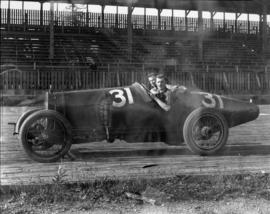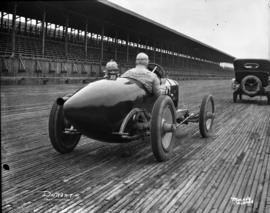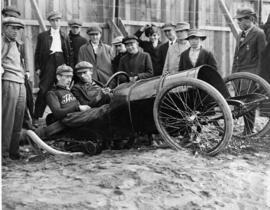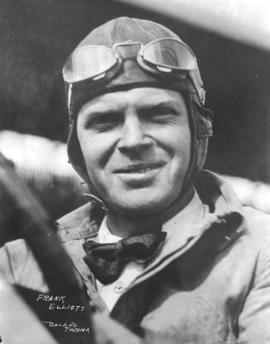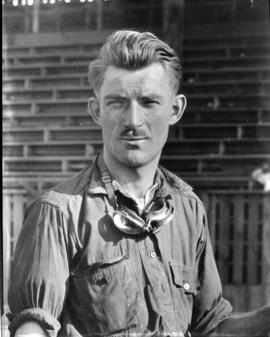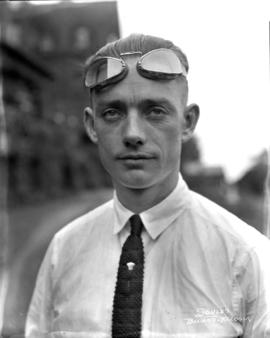- Item
- 1914-07-03
Part of Marvin Boland Photographs
Exhaust fills the air as the speed kings prepare to race at the Tacoma Speedway. The InterCity 100-mile and Golden Potlatch 200-mile races were both run on the same day, July 3, 1914. This is believed to be the start of the Golden Potlatch with Californian Billy Taylor in his #12 Alco and "Terrible Teddy" Tetzlaff in his #3 Maxwell side-by-side and Jim Parsons of Seattle in his #7 Frantz directly behind the Maxwell. None of the three would win the race. Another Maxwell driver, Englishman Hughie Hughes, won the $1500 first place award with Art Klein in his King and Earl Cooper (the previous year's winner) in his Stutz coming in second and third. Mr. Hughes averaged 74.28 mph while beating Mr. Klein by 6 2/5th seconds. Mr. Parsons would finish in sixth place and Mr. Taylor in eighth. If the track looks a bit oily, it probably was. According to a Standard Oil Bulletin, some 1331 barrels of Richmond road oil were used on the two-mile track. (TDL 7-4-14, p. 1-results; Standard Oil Bulletin, Vol. 3, ca. 1915)
Tacoma Speedway (Lakewood); Racetracks--Lakewood--1910-1920; Automobile racing--Lakewood--1910-1920; Racing automobiles--1910-1920; Taylor, Billy; Tetzlaff, Teddy; Parsons, Jim; Alco automobile; Maxwell automobile; Frantz automobile;
